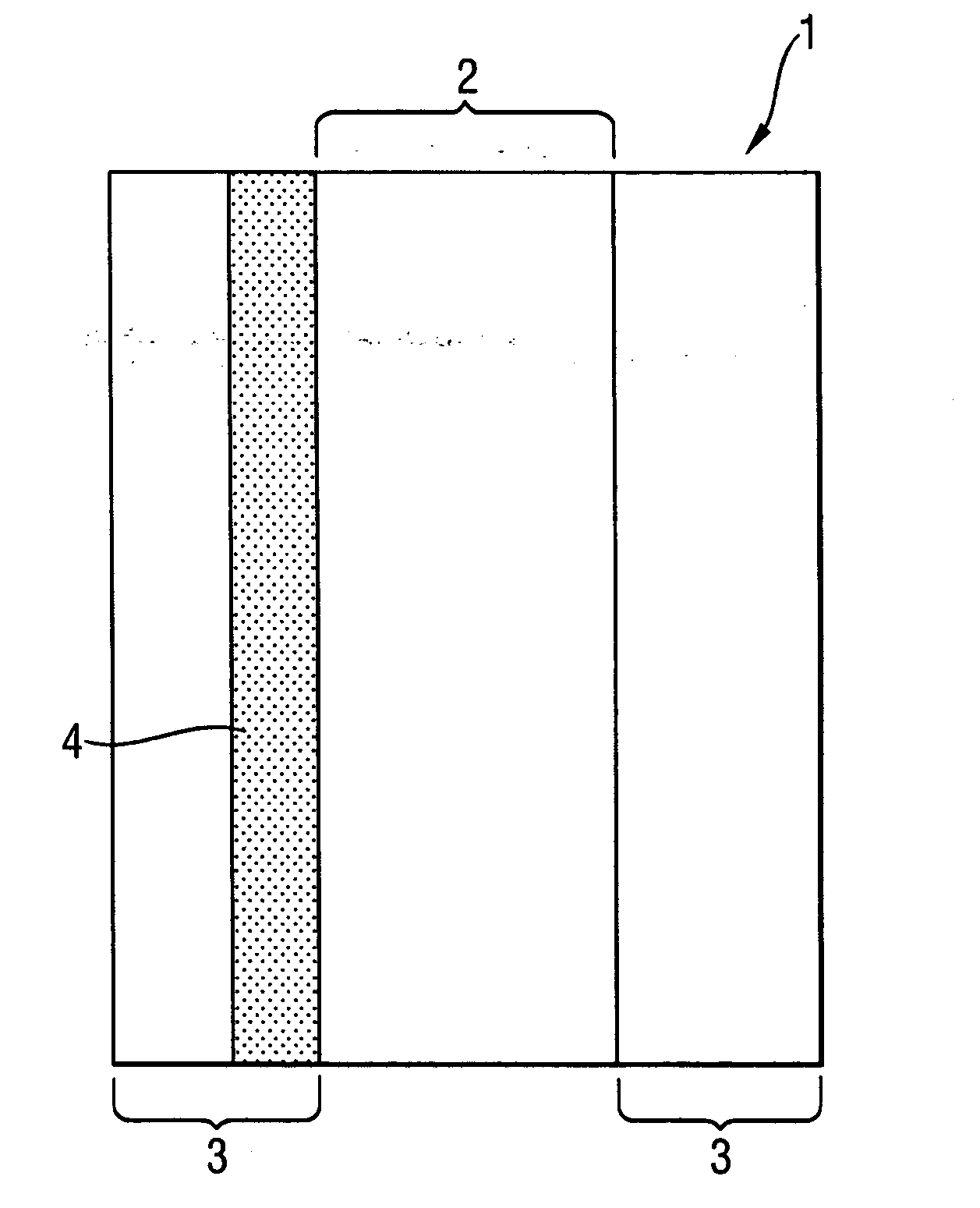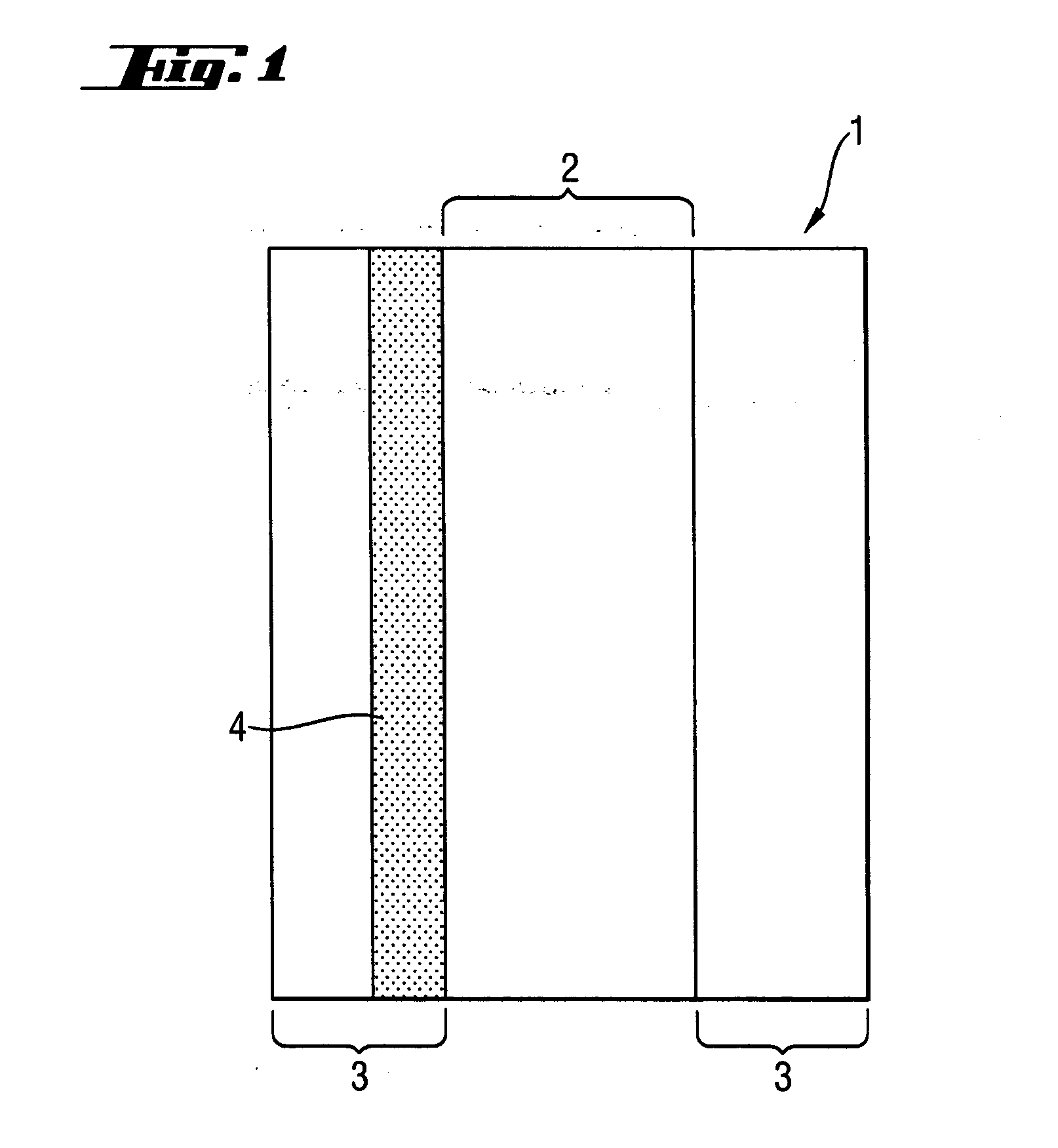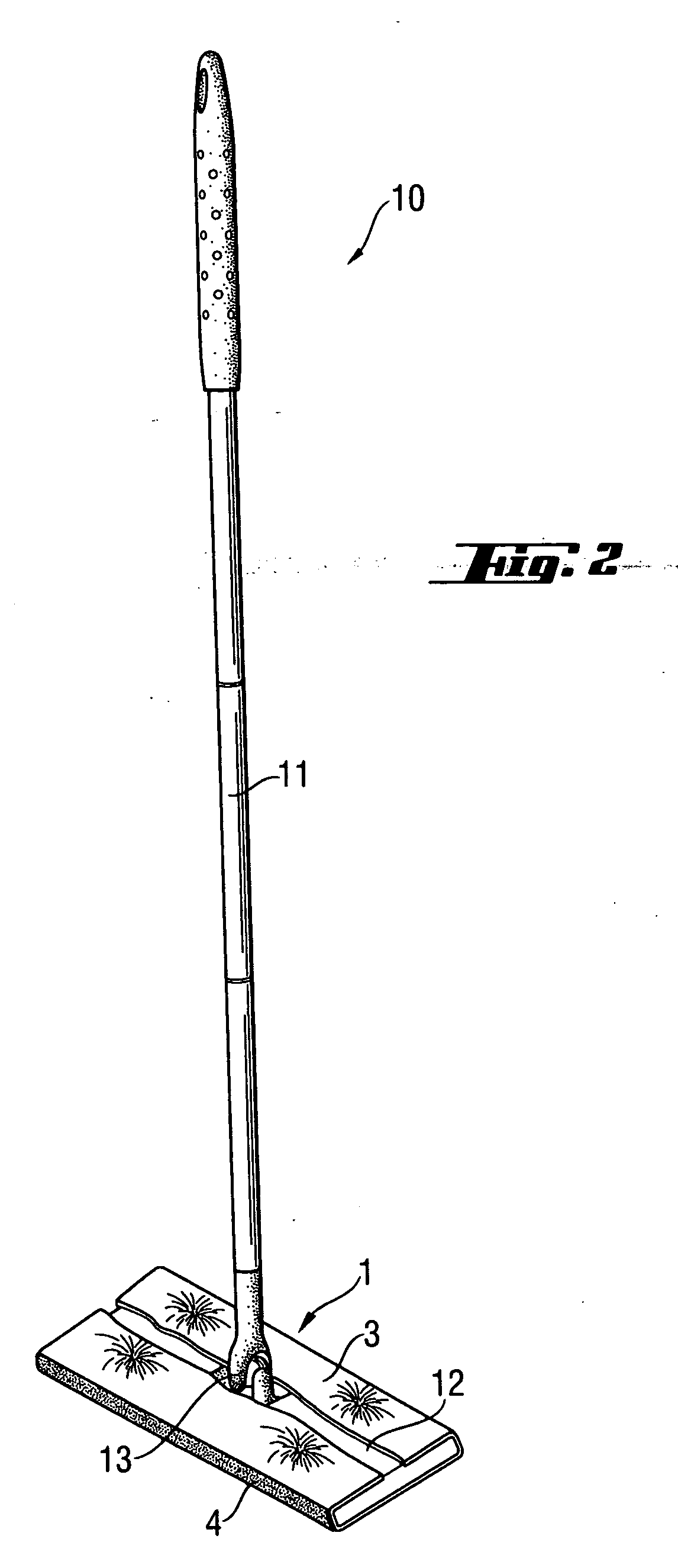Cleaning pad and cleaning implement
- Summary
- Abstract
- Description
- Claims
- Application Information
AI Technical Summary
Benefits of technology
Problems solved by technology
Method used
Image
Examples
Embodiment Construction
[0018] The cleaning pad for use in the present invention comprises an absorbent layer which serves to retain any fluid and soil absorbed by the cleaning pad during use. The absorbent layer may comprise a single layer or a plurality of layers. Preferably the absorbent layer comprises a plurality of layers which are designed to provide the cleaning pad with multiple planar surfaces and / or density gradients, as is described in more detail below.
[0019] The absorbent layer comprises any material capable or absorbing and retaining fluid during use. Typically, the absorbent layer comprises fibrous material, preferably nonwoven fibrous material. Fibers useful in the present invention include those that are naturally occurring (modified or unmodified), as well as synthetically made fibers. Examples of suitable unmodified / modified naturally occurring fibers include cotton, Esparto grass, bagasse, kemp, flax, silk, wool, wood pulp, chemically modified wood pulp, jute, ethyl cellulose, and cel...
PUM
| Property | Measurement | Unit |
|---|---|---|
| Length | aaaaa | aaaaa |
| Abrasive | aaaaa | aaaaa |
| Width | aaaaa | aaaaa |
Abstract
Description
Claims
Application Information
 Login to View More
Login to View More - R&D
- Intellectual Property
- Life Sciences
- Materials
- Tech Scout
- Unparalleled Data Quality
- Higher Quality Content
- 60% Fewer Hallucinations
Browse by: Latest US Patents, China's latest patents, Technical Efficacy Thesaurus, Application Domain, Technology Topic, Popular Technical Reports.
© 2025 PatSnap. All rights reserved.Legal|Privacy policy|Modern Slavery Act Transparency Statement|Sitemap|About US| Contact US: help@patsnap.com



